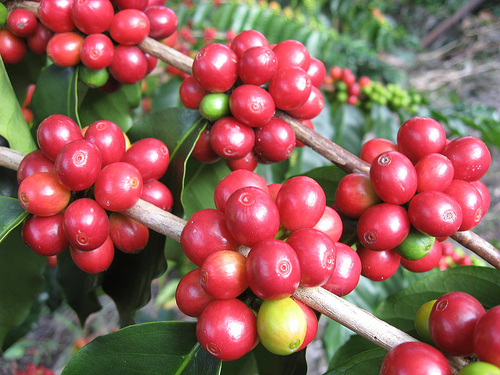 A coffee farming manual that outlines farm management, pest and disease control and post harvest handling of coffee hopes to increase yields to 3 tonnes per hectare from the current 600kgs in Uganda and return the glory of the coffee cultivation.
A coffee farming manual that outlines farm management, pest and disease control and post harvest handling of coffee hopes to increase yields to 3 tonnes per hectare from the current 600kgs in Uganda and return the glory of the coffee cultivation.
The manual which was drafted by scientists from the Coffee Research Institute CORI outlines guidelines on among others, agronomy practices to be used in growing coffee, post- harvest handling, pest and disease management and soil conservation. The publication of the standard extension manual according to experts in the coffee industry is long overdue and comes in the wake of increased varied extension services by various players in Agriculture which ultimately has negatively affected the production and yield of one the major export commodity in Uganda.
According to Dr. Pashal Musoli, a coffee breeder at CORI, there have been a number of stakeholders developing varied coffee farming manuals. However in 2013 National Coffee Platform chaired by Uganda Coffee Development Authority (UCDA) reached a decision to develop a unified manual that should be used by extension service providers in the coffee sector. One of the core considerations being fronted by the researchers in the manual is advising coffee farmers to observe 8 ft by 8 ft spacing when planting Arabica coffee and 10 ft by 10 ft for Robusta. There is emphasis on management of weeds, field preparation, maintenance of soil fertility and pest and disease control.
The manual contains information on agronomic practices such as mulching, stumping, pruning and de-sacking, and post-harvest handling were farmers are advised on proper processing of coffee beans, as well as soil and water conservation.
The manual was developed with input from most players in the coffee industry in Uganda including Ministry of Agriculture, CoRI, Naads, abi Trust, Nucafe, Uganda Coffee Farmers Alliance, Uganda Coffee Federation, Uganda National Agro Input Dealers Association, International Women in Coffee Alliance and Café Africa.
Harriet Fowler, country director, Café Africa Uganda, remarked that the manual is mainly meant for extension service providers. They are to use while teaching coffee farmers how to apply good practices for better yields.
For post-harvest handling, farmers are advised to dry coffee on polythene sheets or tarpaulin. It should be stored under good ventilation, in conditions free from chemicals, and on raised structures. In the international market, demand for coffee is going up. It is increasing by two million bags per year and estimates are that by 2020, the world will require 107 million bags of coffee.
















Comments powered by CComment